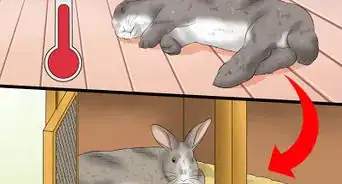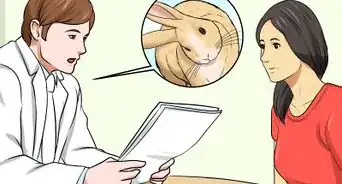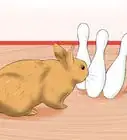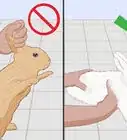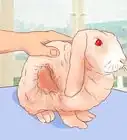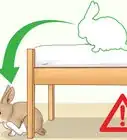This article was co-authored by Pippa Elliott, MRCVS. Dr. Elliott, BVMS, MRCVS is a veterinarian with over 30 years of experience in veterinary surgery and companion animal practice. She graduated from the University of Glasgow in 1987 with a degree in veterinary medicine and surgery. She has worked at the same animal clinic in her hometown for over 20 years.
This article has been viewed 120,722 times.
Rabbits have an instinct to hide their pain, but there are still ways to figure out if your rabbit is experiencing discomfort. Unusual behaviour is often a sign that your rabbit is experiencing pain. You can also look for physical signs of pain-causing injuries or illness, which can be treated to make your rabbit feel better!
Steps
Observing Your Rabbit's Behaviour
-
1Monitor your rabbit's energy level to see if it is active. Healthy rabbits enjoy moving, hopping, and exploring. If a rabbit experiences pain, it is likely to become less active . Watch your rabbit to see if it is listless and reluctant to move.[1]
- A rabbit in pain may also be reclusive, staying in one place in a hidden corner.
-
2Listen for loud tooth grinding. Light tooth grinding can mean that your rabbit is content and isn't normally a cause for concern. Loud tooth grinding is usually a sign of distress. Listen for this rough, grating sound which is a likely sign that your rabbit is in pain.[2]
- As a general rule, tooth grinding that you can hear when you are across the room from your rabbit can be considered "loud."
Advertisement -
3Be mindful of any sudden signs of aggression. Pain can cause a rabbit to be irritable or defensive. If it is in pain, your rabbit may lash out and demonstrate uncharacteristic aggression. Take note if your rabbit tries to bite you or tries to harm another pet.[3]
- Anxiety can also cause aggression in rabbits.
-
4Observe your rabbit's breathing to see if it is rapid or heavy. Irregular breathing is an observable sign of pain or injury in rabbits. If you suspect that your rabbit is in pain, listen to its breathing carefully to see if it is fast or laboured.
- If a rabbit is hot it will breathe more rapidly to try and cool down.
-
5Observe how much food your rabbit is consuming. A rabbit in pain likely lose its appetite. Keep track of how much your rabbit is eating when you empty and clean its food bowl to see if it is eating less. If your rabbit's loss of appetite persists for more than 1-2 days, take it as a sign that it might be experiencing pain.
- A healthy adult rabbit should be eating approximately 0.5 cups of dry pellet food per day.
-
6Note any high-pitched squeals that come from your rabbit. While rabbits tend to deal with pain quietly, they may let out an unnerving sound in the event of sudden pain. If you hear your rabbit make a high-pitched noise, take this sign of pain seriously and bring it to the vet as soon as possible. It will normally take a significant amount of distress to make a rabbit go against its own nature in such a dramatic way.[4]
Looking for Physical Signs of Illness or Injury
-
1Watch for lameness in one of your rabbit's limbs. If your rabbit experiences an injury to one of its legs, it will likely stop using it. Note if you see your rabbit favoring other limbs and leaving one limp. It may also walk instead of hopping to avoid making its pain in a certain limb worse.[5]
-
2Look for bleeding or open wounds. If you are concerned that your rabbit may be in pain, observe it for any visible bleeding or lacerations to the skin. If your rabbit is bleeding, apply gentle pressure to the wound with a clean piece of gauze. If the wound looks deep, wrap your rabbit in a clean towel, place it in its carrier, and bring it to your vet's office or to an emergency veterinary clinic as soon as possible.[6]
- If left untreated, open wounds can get infected.
- It is important to treat open wounds immediately to prevent blood loss or arterial damage.
-
3Observe your rabbit's abdomen for bloating or distension. A buildup of gas in your rabbit's stomach can cause a great deal of pain and discomfort. Observe your rabbit's abdomen to see if it is protruding abnormally. A bloated belly may look like a balloon and feel hard to the touch.[7]
- Bring your rabbit to the vet as soon as possible once you notice abdominal swelling. At a certain point, bloating may become irreversible and fatal.
-
4Check your rabbit's ears for signs of infection. Ear infections can cause rabbits a great deal of pain, but are easy to spot. Look for swelling or redness of the outer ear canal, as well as crust or thick, white fluid emerging from the ears. Ear infections may also be characterised by excessive ear wax or a strong odor coming from the ear canal.[8]
- A vet will be able to diagnose the exact cause of infection and treat it accordingly.
-
5Take note if your rabbit licks, rubs, or scratches at a particular part of its body. If your rabbit experiences skin irritation or injury, it may focus compulsively on that part of its body. Observe your rabbit to see if it repeatedly licks, rubs, or scratches a specific spot. If this behaviour persists beyond 1-2 days, bring your rabbit to the vet to be examined.[9]
- Your rabbit may make its pain worse by licking, rubbing, or scratching an injury, so get it checked by a vet as soon as possible.
-
6Bring your rabbit to the vet once a year to check its health. Your rabbit should be examined at least yearly by a veterinarian, who will be able to assess its health and address any possible health problems. Your vet can test for pain-causing ailments that may not be observable to you. Be sure to tell your vet about any unusual symptoms you have observed in your rabbit, such as changes in eating, sleeping, or behaviour.[10]
- When looking for a vet for your rabbit, choose one who has experience treating rabbits. Some veterinarians may focus on cats and dogs, making them less skilled at treating rabbits.
Warnings
- A rabbit that is in pain may kick, bite, or scratch, so be careful when handling it.⧼thumbs_response⧽
- Once you have determined your rabbit is in pain, they should be taken to the vet for a checkup as soon as possible to see why they are experiencing the pain. A rabbit that is in pain will often stop eating, which can cause issues in the rabbit's gut that lead to serious complications. A vet visit can prevent these complications.⧼thumbs_response⧽
References
- ↑ https://rabbit.org/health/pain.html
- ↑ https://rabbit.org/health/pain.html
- ↑ https://rabbit.org/health/pain.html
- ↑ https://rabbit.org/health/pain.html
- ↑ https://rabbit.org/health/pain.html
- ↑ http://www.exoticpetvet.net/smanimal/rabfirstaid.html
- ↑ http://www.medirabbit.com/EN/GI_diseases/Mechanical_diseases/bloat.htm
- ↑ http://www.netvet.co.uk/rabbits/ears.htm
- ↑ https://rabbit.org/health/pain.html
About This Article
To tell if your rabbit is in pain, watch for low energy and rapid, heavy, or irregular breathing, since these signs indicate distress. Next, check for signs of injury, like limping or open wounds. If there are no injuries, feel its tummy for bloating or distension. Also, check the ears for swelling, redness, or fluid, which are signs of an infection. High-pitched squeals indicate severe pain, so take your rabbit to the vet right away if you hear anything like that. For tips on understanding symptoms like aggression and tooth grinding, read on!
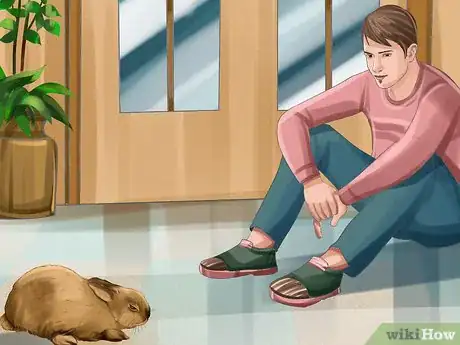
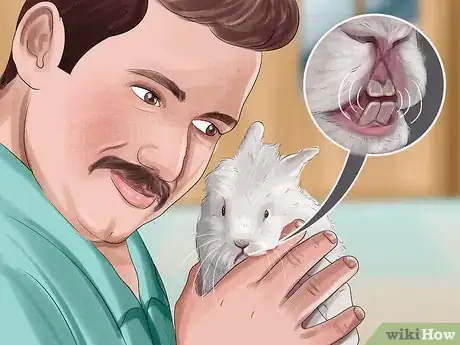
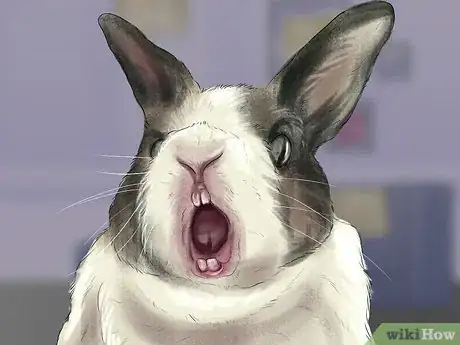
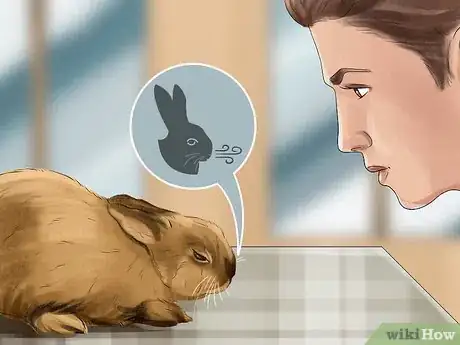
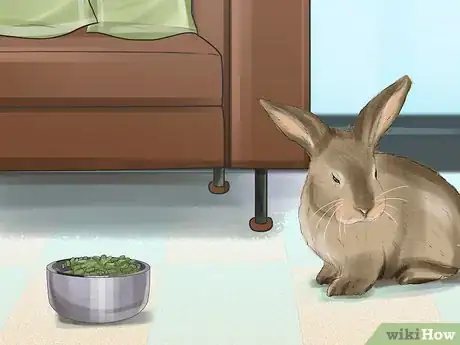
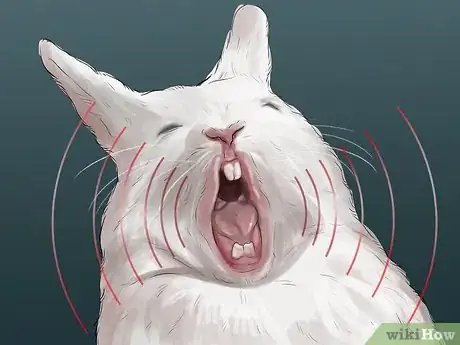
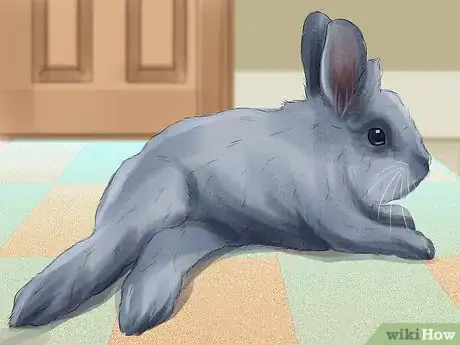
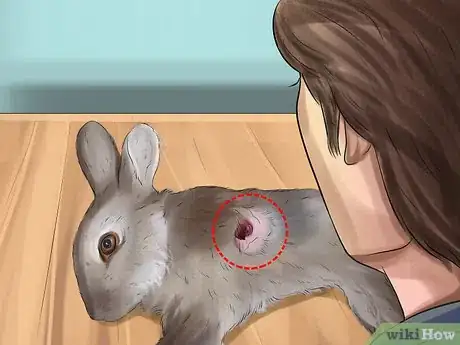
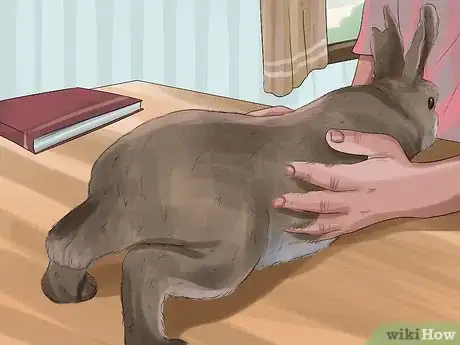
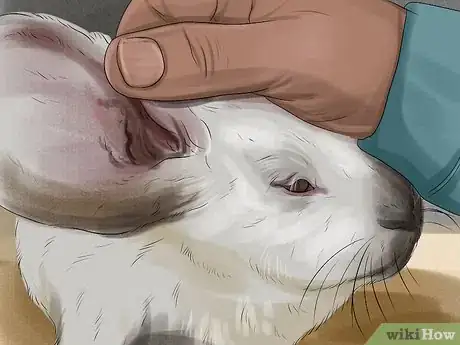
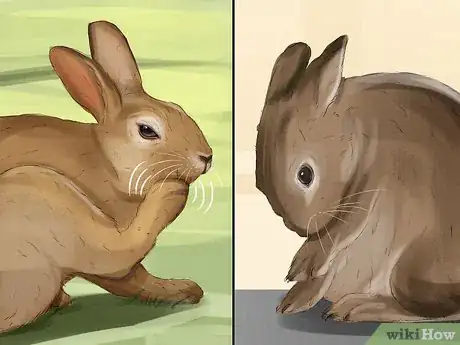
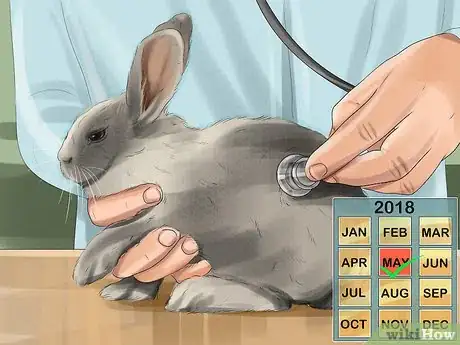
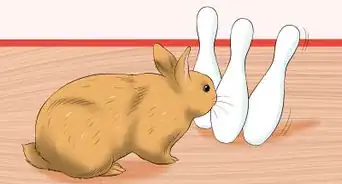
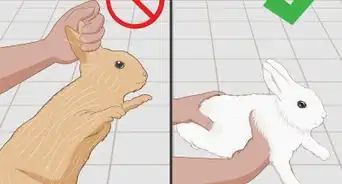
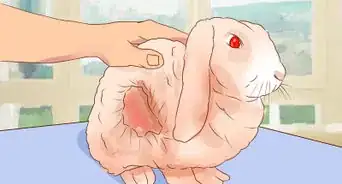
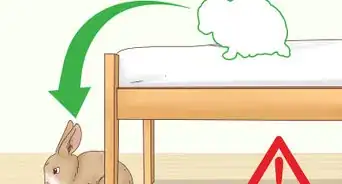
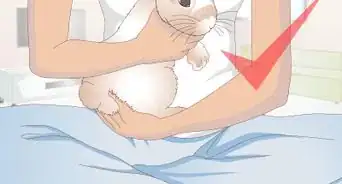
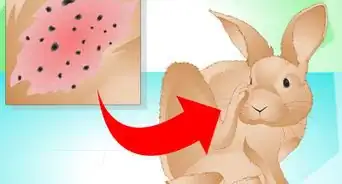
-in-Rabbits-Step-12.webp)

